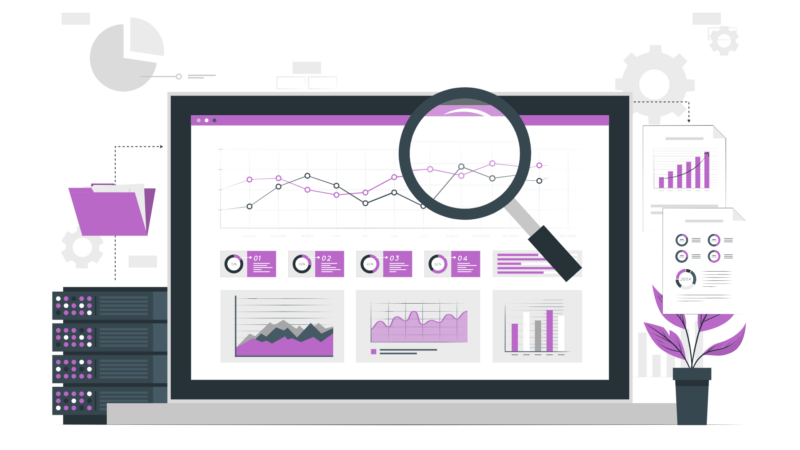What is Workflow Automation?
Workflow automation is defined as the design, implementation, and automation of processes based on existing workflow rules. Through automation, human tasks, data, or files are routed between people or computers according to predefined business standards.
It improves processes by replacing manual tasks with software that automates all or a portion of a process. This is accomplished via software that includes low-code, drag-and-drop functionality, and user-friendly UIs.
If you want to learn what a workflow is, read this article. This article will discuss workflow automation, its types, advantages, use cases, and how to build automated workflows using the software.
Types of Workflow Automation
There are two types of workflow automation, Business Process workflows and Robotic Process workflows.
Business Process Automation
The business process management approach (BPM) is how firms build operations to serve their consumers best. It promotes business process workflows toward greater efficiency to achieve mission-critical business objectives.
Workflow automation software automates business process workflows to optimize operations previously performed manually. For example, Autofill and Macro features in Excel are early instances of process automation.
Robotic Process Automation
Today, there is software that automates robotic processes (known as robotic process automation or RPA). Designed for robots to perform work that is similar to humans.
Bots can detect and recommend the most relevant information to resolve processing issues. They can also aid with help desk inquiries, login authentications, and processing issues. Furthermore, they can also work alongside IT and other fields to support administrative processes.
Workflow automation is a technical name for what has been a practice for hundreds of years. During the Industrial Revolution, assembly lines, manufacturing, and agriculture were the first industries to employ RPA processes. These, however, were machine-based rather than software-based.

Why is Workflow Automation used?
By automating your workflows, you can significantly improve operations predominantly handled manually by people. Automating workflows leads to an increase in the following:
- Efficiency
- Productivity
- Accuracy
- Accountability
- Job Satisfaction
Learn more: What is a Workflow Engine?
Workflow Automation Use Cases
Most workflows can benefit from automation. For example, you may establish and automate all team members' approval procedures or employee onboarding papers for human resources.
You can find workflow automation software in most industrial sectors:
Manufacturing
Workflow automation has changed the manufacturing landscape. It adjusts for changes in supply and company structures. Manufacturing can automate purchase requests, contract management exchanges, and go-to-market product development projects.
It eliminates redundancy, decreases quality-control problems, and reduces procurement, budget, supply chain approval, and cycle times.
Finance
Automation improves payment consistency, reduces compliance obligations, and allows for higher accuracy in forecasting and revenue collection.
Marketing
Marketing Operations Processes (MOPS) use workflow automation for marketing campaigns, customer communication channels, monitoring KPIs, and market analysis.
Sales
Workflow management is also a feature of Customer Relationship Management (CRM) software. It streamlines customer service, form filling, and departmental cooperation. A CRM, for example, may automate approval flow alerts and update the internal dashboard when a customer completes a particular action, such as signing a document or inputting information.
Systems Management
IT as a service (ITaaS) is a software model that offers managed cloud services for enterprises and includes workflow programming.
Workflow automation software implements centralized controls for configuring, implementing, and managing corporate networks.
IT Operations
Workflow automation aids in the management of network users throughout many departments, such as sales, finance, legal, and administrative teams. This automation is beneficial for in-house network operations.

How to Automate Your Workflows
The following are five steps involved in carrying out a workflow automation plan
Identify a Repetitive Process
Firstly, figure out a repetitive and manual process in your business. Then, engage the employees responsible for the operation and consider their input.
Define Goals
After that, clearly articulate the benefit you want from automating a specific task and communicate it with the employees responsible. For example, your goals could be to – Increase ROI, improve cycle times, and boost team efficiency.
Train the Team
The most crucial part of every initiative is successful implementation. Similarly, the success of workflow automation depends on the training and willingness of the employees in charge of managing it. Therefore, encourage their feedback clearly, and communicate the goals and benefits to the process owners.
Design the Workflow
Build the process in the workflow management tool. Create a form, define the workflow, and assign permissions and rules for each step and stakeholder.
Measure KPIs and ROI
Finally, it is essential to assess the post-implementation figures and compare them with past results. This analysis will help determine whether you have achieved your goals or not.
Learn more: What is a Workflow Process?
How to Automate a Workflow Using Workflow Automation Software
To automate your workflow, you must have the workflow process figured out. Creating a workflow process is straightforward once you better understand how to use online whiteboards. They are excellent tools for making workflow diagrams as they allow you to incorporate your entire team and foster an environment of collaboration.
It is not complicated to automate your enterprise workflows. In fact, You can automate workflows, and plan and build them graphically to imitate or improve current processes. using a drag-and-drop interface to add and organize tasks.
The process is shown statically and evaluated by all stakeholders for accuracy. Once the static design is complete, development of the actual process, including the forms, tasks, recipients, and alerts/notifications, begins.
Workflow Automation Softwares
The best software for automating your workflows include Process Maker, Integrify, Kissflow, Flokzu, Comindware Tracker, and Nintex. Usually, Business process management (BPM) tools, or a broader software package, such as marketing automation or CRM will include workflow automation software.
Endnote
Hopefully, this article has helped you understand how automating your workflows can be an incredibly effective tool to improve your overall business efficiency. If you want to learn more about online whiteboards, check out IdeaScale Whiteboard.
Most Recent Posts
Explore the latest innovation insights and trends with our recent blog posts.













